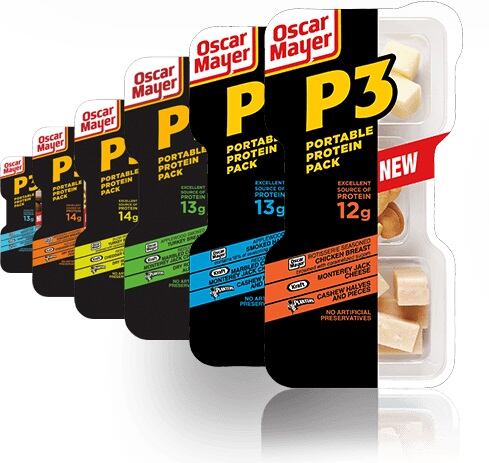In turn, manufacturers are making it easier for consumers to decide for themselves whether a given food product constitutes a meal or snack by not pigeonholing products into defined categories, whether through packaging, portion size or type of ingredients included, Tom Vierhile, innovation insights director at Datamonitor, told FoodNavigator-USA.
“I think that what constitutes a ‘snack’ versus a ‘meal’ is very much in the eye of the beholder today,” he said. “’Snack’ used to be defined as a particular type of food, like a potato chip or a pretzel. But almost any type of food can become a snack based on the portion size and positioning of the food, and that includes whole foods like fruits and vegetables.”
From frozen breakfast items such as waffles packaged in single servings to product categories like applesauce that are increasingly sold in re-sealable stand-up pouches, manufacturers are making “anytime, anywhere consumption” easier, “encouraging consumption across a wider span of dayparts,” Vierhile added.
Hartman Group says that nearly half of eating occasions in the US are now snacks—due in no small part to our growing penchant for convenience and portability. Indeed, a report from market research firm IRI earlier this year found that portable nutrition is one of the top drivers in new product innovations (read here).
“On the go is always kind of the leading factor in snacking trends,” Euromonitor market analyst Matthew Hudak said.

The snack-meal continuum is also being blurred from a size perspective, as consumers trade larger sit-down meals for grazing throughout the day. The traditional chip, popcorn or nut is being turned on its head in favor of more substantial offerings like hummus dip and chips or Oscar Mayer’s P3 Protein Pack (meat, cheese and peanuts), which is ushering meat into the healthy snacking realm, as Kraft pointed out.
“The heftiness of snacks has changed,” Hudak said. “Hummus dip and pretzel thins—with more heft than your typical snack—is not something we ate prior.”
The year of the pretzel chip?
Category-wise, chips are enjoying a bit of a renaissance, as snack makers are revamping them to be more healthful—with everything from bread-inspired formats like Stonefire Naan Crisps, to non-potato chips such as Maya Kaimal chickpea chips, to a proliferation of pretzel chip launches. “Pretzel chips have been huge this year as everyone seems to be getting into that lately,” Vierhile said.
While upscale popcorn continues to dominate, the growth of puffed snacks is giving it a run for its money—particularly given their collective appeal on the go. Not only that, but indulgent flavors “not normally seen in the snack aisle” are getting more experimental, Vierhile noted.
“Introductions like Lay’s Potato Chips in flavors like Cappuccino, Planters Salted Caramel Peanuts, and Krave Artisanal Cabernet Rosemary Beef Jerky show snack makers taking flavor inspiration from all over the map, including desserts and alcoholic beverages,” he said.
Some flavor combinations, like sweet and salty, simply don’t go out of style. “Put caramel and sea salt together and it will sell,” Hudak noted.
‘Popped’ means never having to say you’re sorry (you ate so much)
Obesity remains a major concern in the US, with recent Centers for Disease Control findings estimating that obesity prevalence was 30% or greater in 20 states. Pressure is mounting on both the government and industry to act by improving access to “better for you” foods and beverages—though consumers’ idea of what’s “better” has various interpretations.
For makers of indulgent snacks like candy, that might translate to splitting a chocolate bar into pieces “so a consumer can either share the bar, or eat some of it now, and more of it later,” Vierhile noted.
And while calorie-controlled portion sizes continues to attract certain consumers, tweaking portion sizes may cause others to feel as though their choices are being limited, especially when it comes to savory snacks.
“More subtle efforts to make snacks better for you such as popped chips that may have reduced fat and calorie concepts can carry a ‘better for you’ health message without suggesting the consumer is missing something,” Vierhile said.
Hudak echoed these sentiments, noting that air-raised products—from ready-to-eat popcorn to puffed chips like Pirate’s Booty—are doing well across the board.
“Ingredient-wise, manufacturers seem to be going with more of a less-is-more approach, which you can really see through brands like Skinny Pop. They are sticking with the standard bag size rather than downsizing. There’s admittedly a lot of air in it, but it feels filling.”
Consumers seek simple health cues
Vierhile maintains that consumers appear less concerned about ingredient lists and Nutrition Facts panels when it comes to snacks, though he said more are reaching for so-called healthier snack options, such as Greek yogurt, beef jerky and baked chips.
Instead, those seeking out healthful cues tend to look for certain buzzwords, like “all natural” (despite its legal fuzziness), “minimally processed”—which is being helped along by the growing Paleo diet, which emphasizes no refined sugars or refined grains—and “organic”.
Indeed, according to the International Food Information Council’s 2014 Food & Health Survey, 32% of US consumers say the buy foods with “organic” on the label, up from 27% of consumers in 2013, indicating the continued mainstreaming of organic, Vierhile noted.
Hudak added that one of the biggest on-pack health cues of the past few years—gluten-free—shows no signs of slowing down. “Gluten-free is still really big in snacking—and everywhere else,” he said. “You could almost sacrifice ‘simple ingredient list’ and ‘all natural’ for for gluten free.”
